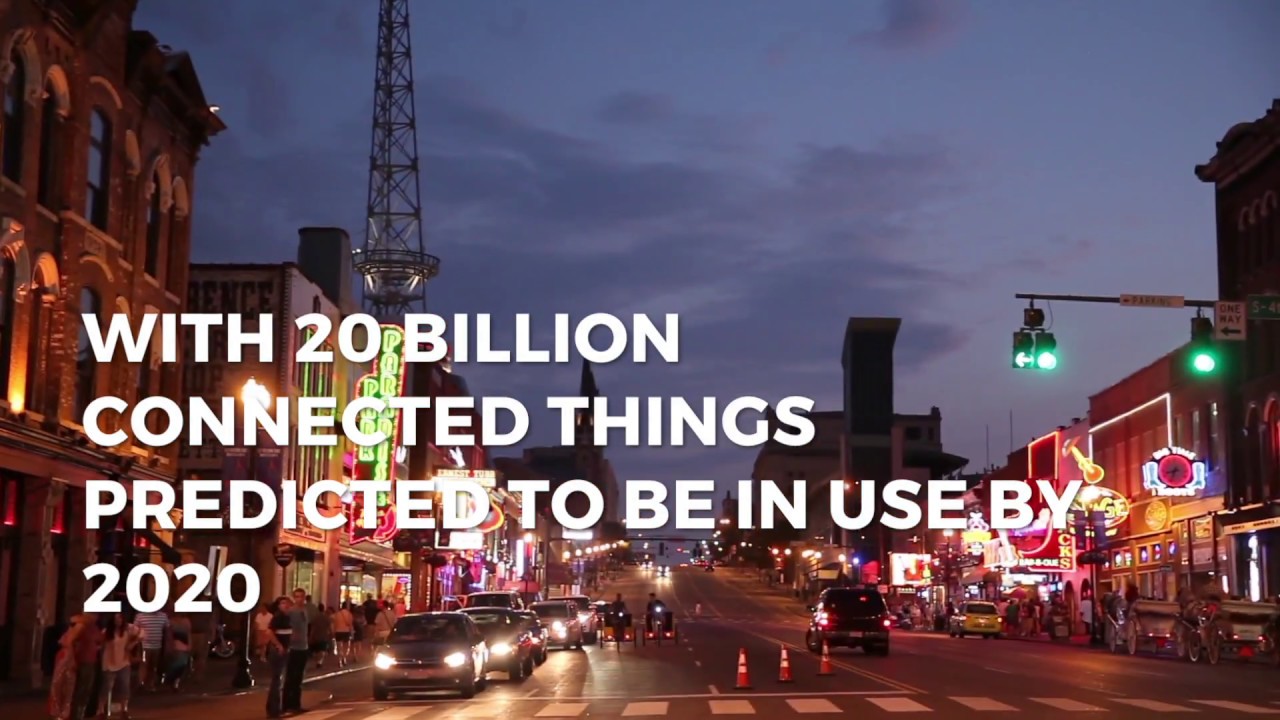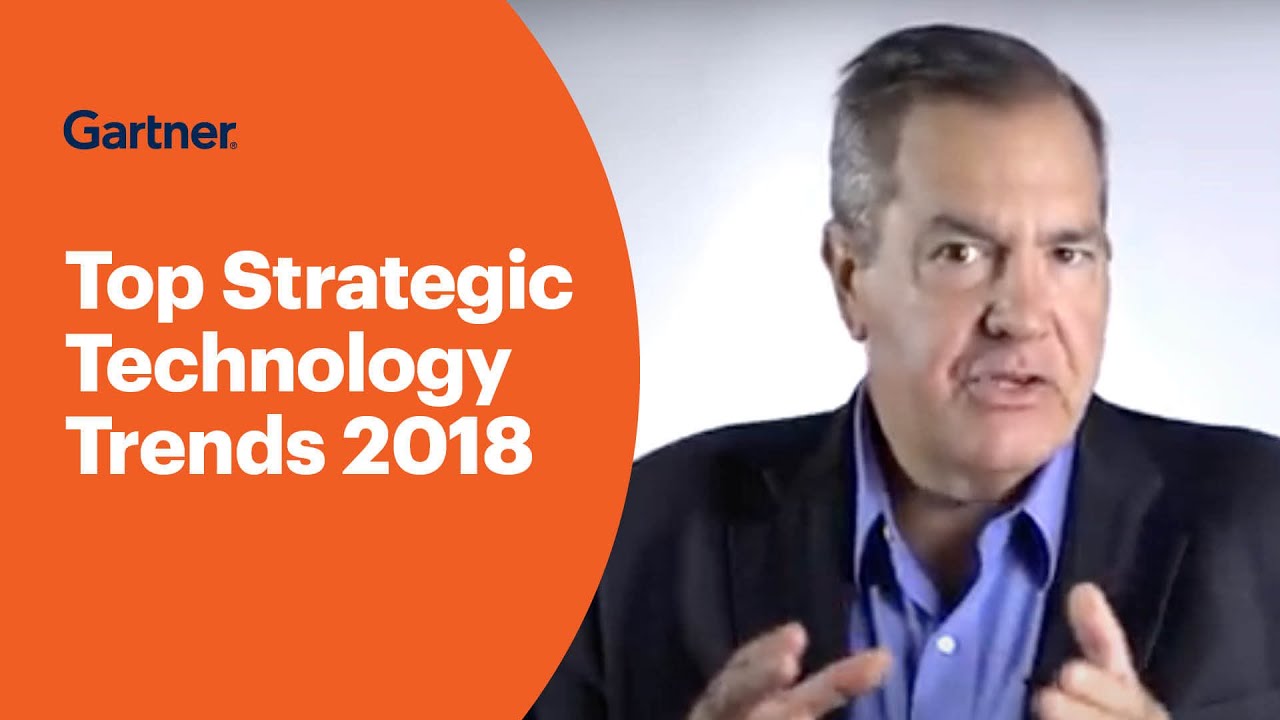A.I. Is Writing News Stories
This article is about three A.I.s writing stories for prominent publishers.
Communication is the act of conveying meanings from one entity to another through the use of mutually understood signs, symbols, and semiotic rules. There are two entities involved: the transmitter of the message and the recipient.
The rise of A.I. has changed how people communicate with each other. Google Duplex assists humans with scheduling certain types of appointments. The virtual assistant carries out conversations in a human-like voice essentially replacing the human transmitter of the message.
Does this mean we need to redefine the theory of communication to include a third entity of non-biological descent?
If the A.I. involvement with the spoken word is more easily accepted due to its fleeting nature, what about the written word?
Let’s see 3 A.I.s currently assisting prominent publishers:
2. Heliograf – The Washington Post

image source: blog.drhack.net
In 2017, the Amazon-acquired Washington Post began using A.I. to write articles. The writing A.I. is called Heliograf and began its writing career by creating pieces on the Rio Olympics, local sports and the election.
Within a year since the publisher started using Heliograf, the A.I. technology has produced 850 articles.
The purpose of Heliograf is to enable journalists to do more high-value, in-depth work, not to take their jobs.
Technology like Heliograf can be transformative for a newsroom, greatly expanding the breadth of coverage and allowing journalists to focus more on in-depth reporting.
Scot Gillespie, Chief Technology Officer at The Post
2. Bertie – Forbes
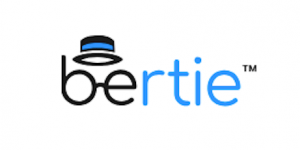
image source: foliomag.com
Bertie is Forbes’ supporting A.I.
The publisher has been using the artificial intelligence technology, named after brand founder B.C. Forbes, beginning with the summer of 2018.
The tool works as follows:
- It recommends article topics for contributors based on their previous output;
- It suggests headlines based on the sentiment of their pieces;
- It recommends appropriate images to illustrate and improve contributors’ articles.
Forbes’ contributors write and produce nearly 300 pieces of content a day and Bertie was designed to help them with thought-starters, getting their creative juices flowing. The A.I. is not writing the articles itself. But this is not so far in the future.
Aside from Bertie, Forbes is contemplating enrolling another A.I. tool, this time a story-writing tool. The publisher has not revealed further information on this particular A.I.-powered tool besides the fact that testing is underway.
Forbes is using Bertie to “make publishing more efficient for Forbes staff and to make it as easy as possible for visitors to consume multimedia content on Forbes’ sites” according to Forbes Media’s new chief digital officer, Salah Zalatimo.
3. Lynx – Reuters’ Insights Tool

image source: Reuters@facebook.com
Reuters started rolling out Lynx, its new editor system in late 2011. Back then, Lynx was designed to help journalists write, edit and file copy. The Lynx system was also designed to take over the management of stories load which can amount to 10.000 stories filed over weekends.
In 2018 Lynx was upgraded from editing and filing to gathering insights. Lynx Insights is “a new in-house automation tool designed to augment reporting by surfacing trends, facts, and anomalies in data, which reporters can then use to accelerate the production of their existing stories or spot new ones.” (source: niemanlab.org)
Speed is an important issue in news reporting, so Lynx Insights was developed with the ability to comb through massive sets of data within a short timeframe. Lynx brings to light unexpected connections and unearths hidden insights. It’s a collaboration-based work: the A.I. tool gives the reporters results on specific queries and the reporters add their conclusions based on judgement and context.
Automated journalism will likely replace journalists who merely cover routine topics. (…) In the future, human and automated journalism will likely become closely integrated and form a ‘man–machine marriage.’
Andreas Graefe, author of Guide to Automated Journalism via niemanlab.org
Conclusions
Whether is reporting news of minor importance, uncovering valuable and unexpected insights or helping contributors produce content more efficiently, automated journalism is here to stay.
What’s next? What about A.I. writing books? Books are the vessels of our collective knowledge. Writing a book is a personal endeavour and a great achievement.
Could A.I. write books? Would you read them?
Maybe writing books is too distant in the future but writing news articles is already taking place today.
Join the Conversation
We’d love to hear what you have to say.
Get in touch with us on Facebook Group and Twitter.
How Can Location Data Help You Grow Your Business
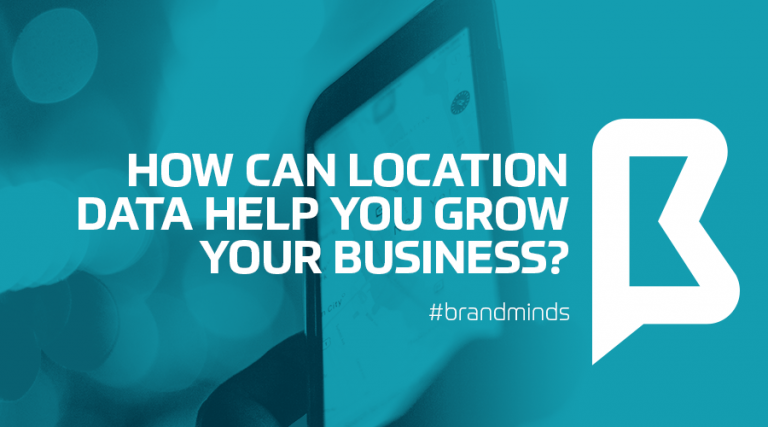
The importance of data is growing daily and its impact on the businesses as well. Gathered and used in smart ways it can help you reach the right audience, in the right way. In other words, it’s a known fact that location intelligence has become a fundamental part of some of the most successful businesses in the world today. Tough economic times and the advancement of new technology in recent years have massively pushed the need for businesses to gain more transparent and competitive insights on their performance and opportunities.
According to geovation.uk, location provides meaningful context. It can identify essential relationships between geography and consumer experiences, products and services. Location intelligence answers important questions, such as ‘where are my most valuable customers?’, ‘where are the issues impacting my supply chain?’ Location intelligence can detect clusters and patterns of events, make predictions, and provide the basis on which to make better business decisions.
Knowing the location of users, employees and company assets is becoming a vital part of many businesses in order to act efficiently and make informed decisions. From helping customers locate relevant amenities (e.g. Foursquare, Tripadvisor) to logistics companies optimizing delivery routes (UPS, Hermes), location, spatial data and digital mapping are playing a pivotal role in these business functions.
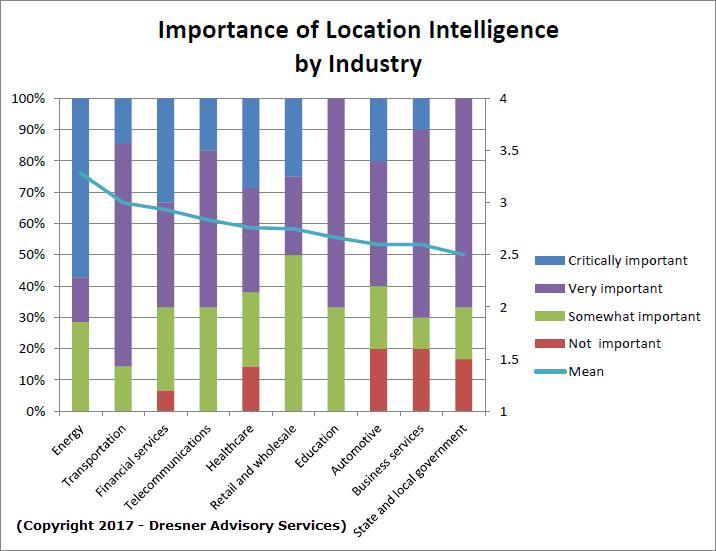
At the same time, location represents a great manner of revealing relationships between data sets that might not have otherwise been obvious and, through location analytics, arrive at great insights.
Worries about concerns like user privacy and data quality are valid: Know that it’s important to source location-informed insights from opt-in data that is thoroughly cleansed and, most importantly, aggregated and anonymized (the Location Search Association recently published a valuable landscape report analyzing the key providers in the space). Be sure to work with a data provider that adheres to emerging industry best practices, including use of data sourced only from apps with specific user opt-in (like Apple is now mandating), and complies with country-specific regulations, like GDPR. – entrepreneur.com
Data company Carto partnered with market research firm Hanover Research on a February 2018 study called “The State of Location Intelligence 2018,” surveying more than 200 C-level executives about the ways their companies are using location data to identify new consumer markets, improve marketing strategies and improve customer service. Here are some of their main findings:
- 66% of respondents said that Location Intelligence was “Very” or “Extremely” important today for their businesses, 78% said it would be in the next year, and 85% said it would be in the next three years.
- Only 27% said that they use any kind of custom geography and 17% use block groups. To understand location data, businesses must begin visualizing and analyzing at a deeper geographic level.
- Nearly all C-level and management level respondents,especially those from small to mid-sized organizations, note a strong likelihood to invest in Location
Intelligence within the next one (78%) to three years (84%). - Companies are very interested in finding data scientists that understand how to manipulate spatial data effectively, and conducting iterative spatial analysis is the most important step in applying Location Intelligence.
- “Ensuring data quality and accuracy” (49%), “gathering data real time” (40%), and “extracting data from existing systems in a usable way” (39%) are more commonplace challenges in terms of data collection.
Taking a closer look at these data, we can see for sure that if you know how to tap into the Location Intelligence right, your business can have a bright future and even expand, especially because many aren’t already using it at its full potential.
Therefore, how can you do more and be ahead of the rest? Entrepreneur.com is giving you some ideas:
- Use the big potential that research is offering you. “Location data can provide a stronger context of your target audience to better activate consumers. Beyond just marketing what you already have, it can also help reveal opportunities for products or services that you’ve not yet developed or marketed.”
- Competitive Intelligence. “This wealth of insight about where people go in the real world and, in particular, how they interact with your competition, is invaluable intelligence to your business and can help inform decisions about everything from pricing and inventory to in-store promotions and staffing levels.”
- Acquisition and investments. “Asset managers are increasingly turning to location data to inform their investments, according to a recent report from Optimas. Given this trend, location data should most definitely be part of your due diligence when evaluating any prospective investment or acquisition. Evaluate the foot traffic patterns in and around the business you’re considering and think about what it might reveal.”
More on the subject, tap here.
Inspirational study cases one can find in this Forbes article.
Top Technology Trends in 2018
The last decade has been undoubtedly under the sign of technology, each year its imprint being stronger and stronger and blurring more and more the lines between fiction and reality.
From AI and VR to the IoT ,companion robots,5G and smart cars, here are the top 18 trends from CES this year, as related by Forbes.
According to DXC.technology, there are 6 big trends coming our way in 2018: re-platforming the enterprise, the war for digital talent becoming creative and vigorous, qualified enterprises, cyber resilience,companies growing thanks to digital business extensions and artificial intelligence getting smarter and more practical. The detailed information can be found here.
Meet Joe Escobedo, One of Singapore’s Brand Minds
Recognized as one of the “Top 20 Content Marketers” worldwide and awarded the “Most Influential Global Marketing Leader” at the World Marketing Congress, Joe has helped countless organizations and executives transform from relative unknowns to superheroes online. He has also created and led successful digital marketing, branding and PR campaigns for both startups and Fortune 500 firms. He is a contributor for both Forbes and the HuffPost, as well as an award-winning speaker. His articles, interviews and talks have been read or heard by nearly one million people.
What is the significance of Joe Escobedo “The Brand Builder” and what is the story behind it?
“The Brand Builder” is a moniker given to me by my colleagues when we were trying to create ‘superhero’ names for the team.
You worked with companies from U.S., China and Singapore, which market did you like the most and why so?
The safe answer would be Singapore, but my five years in the gauntlet known as China made me what I am today. It taught me humility and the importance of guanxi (relationships).
Name one situation that made you want to quit and change your career.
I want to learn something everyday so there were times in my career where I felt like I wasn’t learning anything new or pushing myself hard enough. It’s during those times that I’ve transitioned to a completely new field or market. Sometimes I’ve failed miserably, but I learned from each experience and have grown from it.
Name one situation that made you want to go forward.
I’m driven when people tell me I can’t do something. I’ve been told that more times than I can count throughout my career. During those times, I think in my head, “hold on a second and watch this!”
What do you think are the most difficult challenges marketeers have to face in Asian markets nowadays?
Taking a long-term view. Too often, global headquarters look to the regional office in Asia and say, “You’re our growth engine now so you should be growing at a double-digit rate.” The problem with that is that it forces marketers to look only at the month ahead, rather than what’s going to rise up and disrupt their industry next year.
Investment matters. If you would invest in one particular business field nowadays. What would that be?
If I were looking for some quick cash, I’d say anything A.I. related. But I generally play the long game so I’d invest in things people always need, like food and toilet paper.
If you could change something about Singapore’s marketing community to improve it in any way what would that be?
I’d encourage the Community to take risks and invest more in digital. An ad plastered over the MRT may look great but what’s the return on your investment?
What made you settle down in Singapore?
The short answer: love. I followed my wife who received a job offer before I did.
Meet Joe Escobedo, The Man behind the suit
Name one good habit that helps you deal with your active life.
Reading to my daughter, because in that moment, I’m not Joe “The Brand Builder.” I’m whichever character I’m reading in the book.
Name one bad habit you can’t quit.
Speed walking. I tend to walk like I’m always 15 minutes late to a meeting.
If you could be anything else but a marketing leader, what would you be?
In another life, I would’ve been a film director. I wrote, directed and edited a sketch comedy movie when I was in college. I loved the experience and think I could’ve been a third-rate Christopher Nolan.
You are recognized as “One of the Most Influential Global Marketing Leaders”. What’s your favorite movie of a global marketing leader?
Don’t know if it’s about a global marketing leader per se, but Game of Thrones. After over a decade as a marketer, I see too many similarities between that show and the marketing world, albeit slightly less violent. For instances, strong alliances with the “right” groups can help you get closer to the corporate Iron Throne.
Tell us your favorite book. What’s the best thing you learned from it?
“How To Win Friends & Influence People,” by Dale Carnegie. I’ve read the book at least 10 times and everytime I ‘learn’ something new. My favorite lesson is about putting yourself in the other’s shoes – thinking about what they would want rather than what you’d want them to do.
Name the most important value you have.
Grit. It’s the only reason I’m still around and kickin’ in the professional world. Because even when I get battered to the ground, I claw my way back up. It’s an invaluable trait for any marketer or entrepreneur.
Name the most important value a leader should have.
Empathy. Every boss wants to make the most profit they can but they can only do so with a strong team behind them. And the only way to build and retain a strong team is to empathize with your staff’s situation. If they get demotivated because a client scolded them, then give them a pep talk. If there are unseen circumstances that caused them to miss a deadline then be understanding to their situation.
If you could compare your journey as an entrepreneur with a song, what song would you choose?
“Highway To Hell.” Just kidding! Instead of a song, my journey can be best described by “The Road Not Taken” by Robert Frost. From my move to China when I was 22, my career has been characterized by these lines: “Two roads diverged in a wood, and I— I took the one less traveled by, and that has made all the difference.”
Tell us the funniest experience you had this year related to your work.
Some of the funniest moments during the past year happen behind-the-scenes. For instance, we use to have “Happy Friday” dance parties at my company. And I’m not one to brag but my rendition of “Hotline Bling” by Drake stole the show.
If you would give our readers one advice from your professional experience, what would that advice be?
To quote the great Conan O’Brien, “If you work really hard, and you’re kind, amazing things will happen.” I truly believe that. Because everyone wants to help the hardworking nice guy or gal.
What is your biggest expectation for the Brand Minds ASIA event?
I’m looking forward to seeing Gary V walk on stage to a deafening cheer, unleash some savage knowledge and drop the mic.
15 Things you might not know about Seth Godin
Seth Godin is one of the world’s most renowned marketing experts and a bestselling author. He was a keynote speaker at BRAND MINDS 2018.
BRAND MINDS is The Biggest Business Event in Central & Eastern Europe.
Seth Godin is the author of 18 books that have been bestsellers around the world and have been translated into more than 35 languages. He writes about the post-industrial revolution, the way ideas spread, marketing, quitting, leadership and most of all, changing everything. You might be familiar with his books Linchpin, Tribes, The Dip and Purple Cow.
More things about him that you might not know:
1. He received degrees in computer science and philosophy from Tufts University, followed by an MBA in marketing from the Stanford Graduate School of Business.
2. From 1983 to 1986, he worked as a brand manager at Spinnaker Software. After leaving Spinnaker in 1986, he used $20,000 in savings to found Seth Godin Productions, primarily a book packaging business, out of a studio apartment in New York City. He then met Mark Hurst and founded Yoyodyne. After a few years, Godin sold the book packaging business to his employees and focused his efforts on Yoyodyne, where he promoted the concept of permission marketing.
3. In addition to his writing and speaking, Seth founded both Yoyodyne and Squidoo. His blog (which you can find by typing “seth” into Google) is one of the most popular in the world.
4. He was recently inducted into the Direct Marketing Hall of Fame, one of three chosen for this honour in 2013.
5. Godin once again set the book publishing industry on its ear by launching a series of four books via Kickstarter. The campaign reached its goal after three hours and ended up becoming the most successful book project ever done this way.
6. In April 2016, Godin’s book, All Marketers Are Liars, was selected by Forbes contributor Carine Alexis as one of six essential books every marketer should have on their shelf.
7. His newest book, What To Do When It’s Your Turn, is already a bestseller.
8. “Seth Godin may be the ultimate entrepreneur for the Information Age,” Mary Kuntz wrote in Business Week nearly a decade ago.
9. “We need to care enough to connect, care enough to put ourselves at emotional risk to touch other people and play one note that’s worth hearing,” Godin said for TEDx.
10. According to entrepreneur.com, Godin has one of the most-loved marketing blogs on the internet.
11. In 2005 he launched Squidoo, a website that helps hobbyists publicize and monetize their personal passions and now attracts more than 53 million unique visitors a month.
12. Still, according to entrepreneur.com, he is not a Facebook fan or Twitter and has no publicist. Books from his publishing venture The Domino Project, launched in conjunction with Amazon, did not have major publicity pushes or wide releases at bookstores.
13. As a child, Seth Godin played the clarinet.
14. Godin is aiming to connect with should-be, almost-are or want-to-be artists.
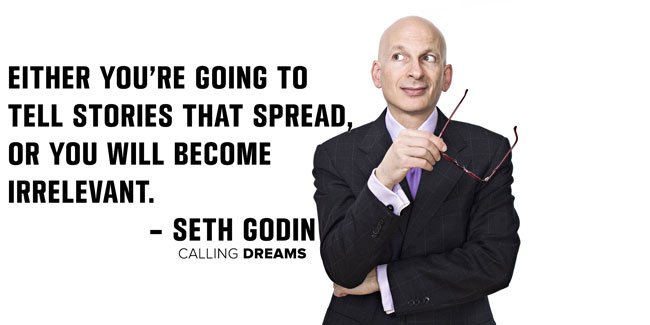
15. He created a ten-book series for children titled ‘Worlds of Power’, which was written by various writers and in each series a plot of a video game is explained.
Are you a #worldchanger?
Come to BRAND MINDS 2023!
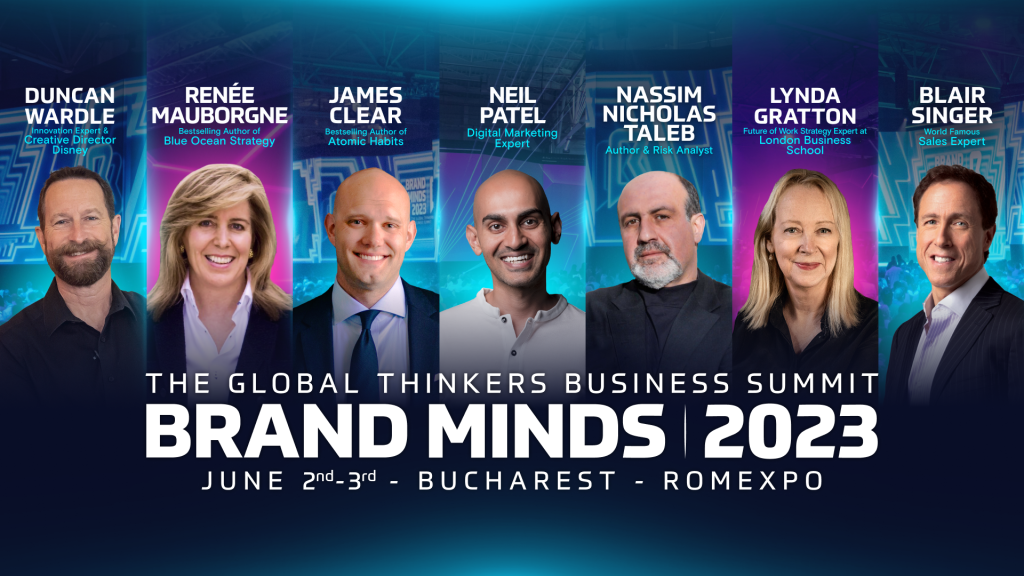
What medical technology brings new in 2017
- CRISPR
According to CBS, at the International Summit on Human Gene Editing, hosted by the U.S. National Academy of Sciences in Washington, the Chinese Academy of Sciences and the UK’s Royal Society, much discussion surrounded a newly developed gene editing biotechnology called CRISPR — derived from a bacterial protein — that lets scientists clip away or tweak specific portions of DNA. “It has the potential to help get rid of certain diseases by splicing out defective snippets of our genes. But because of the unknown long-term impact, some leading scientists are calling for a moratorium on its use,” says CBS.
2. Wideband medical radar
Painful mammograms requiring the patient to stand while her breast is compressed in an X-ray machine might soon be a thing of the past. Current mammography techniques are not only painful but expensive, and may expose the patient and clinicians to harmful ionizing radiation. But medical radar is now being developed for imaging breast cancers, using radio waves instead of sound or radiation. Medical radar uses electromagnetics similar to a microwave oven or cell phone, but at extremely low power. It is also a fast and easy-to-use technology. The process takes less than a minute, and both breasts can be scanned while the patient lies comfortably on a table.
3. 3D bioprinting of human tissue
The process is based on liquefying cells from either the patient or a donor in order to provide oxygen and nutrients. The cells are then deposited on a scaffold, layer by layer, based on a predetermined configuration customized to the patient. Then the bioprinted structure is incubated until it becomes viable tissue. Several universities have created their own bioprinters, and manufacturers such as the Swiss-based regenHU Ltd. and German Envision TEC are selling 3D bioprinting equipment and materials.
California-based Organovo and other companies are currently providing functional human tissue for pharmaceutical testing, and in December 2016 Organovo presented the first data showing survival and sustained functionality of its 3D bioprinted human liver tissue when implanted into animal models. Organovo aims to submit such therapeutic liver tissue to the FDA in as soon as three years. Moreover, Russian 3D Bioprinting Solutions printed a functioning thyroid in a mouse model and claims to be ready to do the same in humans.
4. Smart acupuncture
It might be one of the oldest forms of healing, but acupuncture has some innovations on the way. According to Forbes, Kiseok Song, a student at the Korea Advanced Institute of Science and Technology, has created a way to deliver “ smart acupuncture”—a version of the ancient practice that uses electro-acupuncture to provide data on treatment. While the technology is still in development, this could potentially transcend multiple fields of study as a way of healing.
5. Electromagnetic acoustic imaging (EMAI)
This is an emerging imaging technology that combines bio-electromagnetism with acoustics. The result is an ultrasound device that’s safer than a CT and can provide images that approach MRI quality. It offers physicians the ability to distinguish between malignant and benign lesions at a fraction of the cost of higher-end systems such as MRI or PET.
The science is based on dissimilar tissues reacting differently to outside stimuli. Each layer of tissue will vibrate at its own unique frequency when stimulated. This can be measured and converted into an image by means of ultrasound detectors. Researchers have used light, ultrasound, and electromagnetic energy for stimulating tissue.
Cancerous tissue is 50 times more electrically conductive than normal tissue, and electromagnetic energy also has the ability to penetrate much more deeply into the body than light. This makes electromagnetic acoustic imaging an excellent technology for diagnosing a whole range of tumors despite their location. Studies have shown that the low levels of electromagnetic energy required for the body are safe, and can detect tumors as small as two millimeters in diameter. Not only is EMAI effective, less expensive, and safe, it’s fast and the equipment is portable.
6. The Microsoft Kinect-powered physical therapy
With the physical therapy industry being estimated at USD 30 billion, it has been changing rapidly, also with the help of Virtual Reality and motion-sensor technology, ready to improve the process. For example, in 2015, the FDA approved Reflexion Health to introduce an at-home rehabilitation program using Microsoft’s Kinect. Vera is a digital medicine software system that uses the Kinect technology in helping patients with musculoskeletal rehabilitation. When used, patients will see an avatar on their television screen that will coach and motivate them to perform the exercises at home. The sensor will track their progress and report the data back to the patient’s physical therapist who is also monitoring their activity in real-time.
7. Headspace helping meditation
According to the National Center for Complementary Integrative Health, meditation can have a profound impact on both your mental and physical health. It’s becoming apparent that this is a great alternative to taking medication, and is something you should certainly consider if you experience anxiety. Though technology and meditation may not seem like a likely pairing, apps like Headspace can help you maintain your mental focus while on the go.
8. Nanobots treating strokes
Stroke is the No. 5 killer in the United States. Even when the patient survives the result can be long-term disability, which can be heartbreakingly painful and very expensive. Nanotherapeutics, treating disease on the molecular level, is already being used in the treatment of cancer and infections. Now emerging targets of nanobots are breaking up stroke-causing blood clots and the precision delivery of drugs for reversing the effects of stroke.
Scientists have been studying platelet-sized nanobots coated with a tissue plasminogen activator (tPA), one of the most effective clot-busting drugs known. These nanobots are fabricated as aggregates of multiple smaller nanoparticles (NPs). The microscale aggregates remain intact when flowing in blood under normal conditions, but break up into individual nanoscale components when exposed to the blocked artery.
9. The Echopixel – A revolution in 3D medical imaging
EchoPixel renders patient-specific anatomy in an intuitive, interactive virtual reality format, leading directly to increased clinical knowledge, faster operations, and better care. True 3D, from EchoPixel, is an advanced medical visualization software solution. It offers physicians an unprecedented opportunity to view and interact with patient tissues and organs in a truly 3D form, as if they were real physical objects.
It takes data from CT and MRI scans and transforms it into 3-D holographic images so she can view and interact with patient tissues and organs as if they were real physical objects. Medical 3-D imaging is not new, but the way organs appear to pop out of the screen and the ease at which the anatomy can be manipulated has never been seen before in medicine.
10. Human head transplants
Sergio Canavero , an Italian neurosurgeon, intends to attempt the first human head transplant, though no successful animal transplants with long-term survival have yet been made. Because of the difficulty of connecting the spinal cord, Canavero has suggested improvements in the process using a special blade and polyethylene glycol, a polymer used in medicine as well as in everything from skin cream to the conservation of the Mary Rose, can help start growth in spinal cord nerves.
A special bio-compatible glue will hold the spinal cord together so it can fuse with the donor body. The patient will then be put in a drug-induced coma for four weeks while the connection between the head and body heals. Canavero says all the technology he needs is available, and estimates the procedure will take about 36 hours and require the services of 150 medical professionals. He expects a 90% chance of success, as in a 90% chance the patient is up and walking around a few months after the surgery. This all still sounds like science fiction, and medical professionals are mostly skeptical of Canavero’s plan.
Worldwide technology trends in 2017
The technology is advancing nowadays even faster than the speed of light. Its advances and upgrades can seem overwhelming, thankfully though we have the specialists to help us understand where we are heading and how to handle it. The Deloitte’s 2017 report outlines how companies presently must sift through the promotional noise and hyperbole surrounding emerging technologies to find those solutions offering real potential. To realize that potential, they should become ‘kinetic’ organizations—companies with the dexterity and vision required to thrive amid ongoing technology-fueled disruption.
While the report identifies key trends that will likely revolutionize enterprise technology in the next 18-24 months, the exponentials chapter looks even farther into the future, describing four key areas that blend science and applied technologies.
The 2017 trends identified by Deloitte, digitaltrends.com, Forbes and Gartner are as follows:
IT unbounded—The boundaries surrounding IT are fading as technology becomes integral to almost every business function and relationship.
IoT and Smart Home Tech
A multitude of wireless technologies now exist to serve your smart home needs — Zigbee, Z-Wave, Bluetooth, Wi-Fi, and more. And there’s more smart home platforms to consider than ever before too — Wink, SmartThings, Iris by Lowe’s, even systems from security providers like ADT and big brands like Comcast. While centralization in theory should make things easier, it’s made it worse.
The AI world will have a head-on collision with the Internet of Things in 2017, too, Gartner predicts. IoT is where everyday items get chips or sensors, and apps, and join the internet — from your car to your toothbrush. It makes total sense that the apps that control IoT devices will also make use of machine learning.
In 2017, watch for devices to start to communicate and help each other make decisions. “As intelligent things, such as drones, autonomous vehicles and smart appliances, permeate the environment, Gartner anticipates a shift from stand-alone intelligent things to a collaborative intelligent things model,” Gartner says. Gartner estimates that six billion connected “things” will be actively requesting support from AI platforms by 2018.
The total IoT market is estimated to grow from $157.05 billion in 2016 to $661.74 billion by 2021, predicts Markets and Markets.
Artificial Intelligence and Automation

AI and chatbots that understand context a whole lot better than ever before. More and more jobs will also be automated, we’ll also see smart devices gain from increased automation, learning your patterns and preferences without you needing to tell them and making better and more accurate suggestions and recommendations.
Research firm Markets and Markets estimates that the AI market will grow from $420 million in 2014 to $5.05 billion by 2020.
Artificial Reality and Virtual Reality
According to Gartner, virtual reality (VR) and augmented reality (AR) transform the way individuals interact with each other and with software systems creating an immersive environment. For example, VR can be used for training scenarios and remote experiences. AR, which enables a blending of the real and virtual worlds, means businesses can overlay graphics onto real-world objects, such as hidden wires on the image of a wall. Immersive experiences with AR and VR are reaching tipping points in terms of price and capability but will not replace other interface models. Over time AR and VR expand beyond visual immersion to include all human senses. Enterprises should look for targeted applications of VR and AR through 2020.
As forbes.com points out we’ve already seen some major steps forward for augmented reality (AR) and virtual reality (VR) technology in 2016. Oculus Rift was released, to positive reception, and thousands of VR apps and games followed. We also saw Pokémon Go, an AR game, explode with over 100 million downloads. The market is ready for AR and VR, and we’ve already got some early-stage devices and tech for these applications, but 2017 it’s going to be the year we see things really take off. Once they do, you’ll need to be ready for AR and VR versions of practically everything—and ample marketing opportunities to follow.
“Look for navigation services to get even more specific — maps in a store’s app, for example, to direct you to a specific aisle to find exactly what you’re looking for. So called “augmented reality,” where virtual objects and information are displayed on top of the physical world, will make its way to our phones. Search engines are already expanding on image search, allowing you to point your camera at something and search for information based on what the lens takes in,” said Ed Oswald for digitaltrends.com.
IDC predicts that worldwide revenues for the augmented reality and virtual reality (AR/VR) market will grow from $5.2 billion in 2016 to more than $162 billion in 2020.
Advances in computer vision and pattern recognition allow companies to unlock insights from unstructured data that until now, have been lost in the dark.
Machine intelligence is helping companies make better decisions, embed complex analytics into customer and employee interactions, and—with adoption of bots and robotic process automation—automate increasingly difficult tasks.
“Throughout 2017, I expect to see machine learning updates emerge across the board, entering almost any type of consumer application you can think of, from offering better recommended products based on prior purchase history to gradually improving the user experience of an analytics app. It won’t be long before machine learning becomes a kind of “new normal,” with people expecting this type of artificial intelligence as a component of every form of technology,” predicts Jayson DeMers for Forbes.
Mixed reality (Physical-Digital Integrations)
Companies are exploring more immersive and engaging ways to combine the physical world and digital systems, creating a new, mixed reality that’s more natural, intuitive and intelligent.
Mobile devices have been slowly adding technology into our daily lives. It’s rare to see anyone without a smartphone at any given time, giving us access to practically infinite information in the real-world. We already have things like site-to-store purchasing, enabling online customers to buy and pick up products in a physical retail location, but the next level will be even further integrations between physical and digital realities. Online brands like Amazon will start having more physical products, like Dash Buttons, and physical brands like Walmart will start having more digital features, like store maps and product trials.
Open standards, cloud-first designs and loosely coupled architectures are the norm in start-ups. Now, large enterprises have similar ambitions.
Traditional business products are being reimagined as services as organizations modernize core systems and the technology stack.
Digital Twin
According to Gartner, within three to five years, billions of things will be represented by digital twins, a dynamic software model of a physical thing or system. Using physics data on how the components of a thing operate and respond to the environment as well as data provided by sensors in the physical world, a digital twin can be used to analyze and simulate real world conditions, responds to changes, improve operations and add value. Digital twins function as proxies for the combination of skilled individuals (e.g., technicians) and traditional monitoring devices and controls (e.g., pressure gauges). Their proliferation will require a cultural change, as those who understand the maintenance of real-world things collaborate with data scientists and IT professionals. Digital twins of physical assets combined with digital representations of facilities and environments as well as people, businesses and processes will enable an increasingly detailed digital representation of the real world for simulation, analysis and control.

source: Blockchain Technologies
Blockchain, a way of distributing a database across many far-flung computers, is emerging as the mainstay for digital identities in the emerging trust economy.
Exponentials watch list – Advances in disruption forces like synthetic biology, energy storage, quantum computing, and nanotech could exponentially transform the way we do business. Remember the big Bitcoin phenom of 2015? It turns out that the coins themselves could be far less valuable than the underlying technology, called blockchain, that created them.
Consortiums have sprouted up to create new blockchain apps for the financial industry, for health care, and so on.
Market Reports Hub believes the global blockchain technology market will grow from $210.2 million in 2016 to $2.3 billion by 2021.
Advances in disruption forces like synthetic biology, energy storage, quantum computing, and nanotech could exponentially transform the way we do business.
Humanized Big Data (visual, empathetic, qualitative)
Big data has been a big topic for the past five years or so, when it started making headlines as a buzzword. According to Forbes, the idea is that mass quantities of gathered data—which we now have access to—can help us in everything from planning better medical treatments to executing better marketing campaigns. But big data’s greatest strength—its quantitative, numerical foundation—is also a weakness. In 2017, I expect we’ll see advancements to humanize big data, seeking more empathetic and qualitative bits of data and projecting it in a more visualized, accessible way.
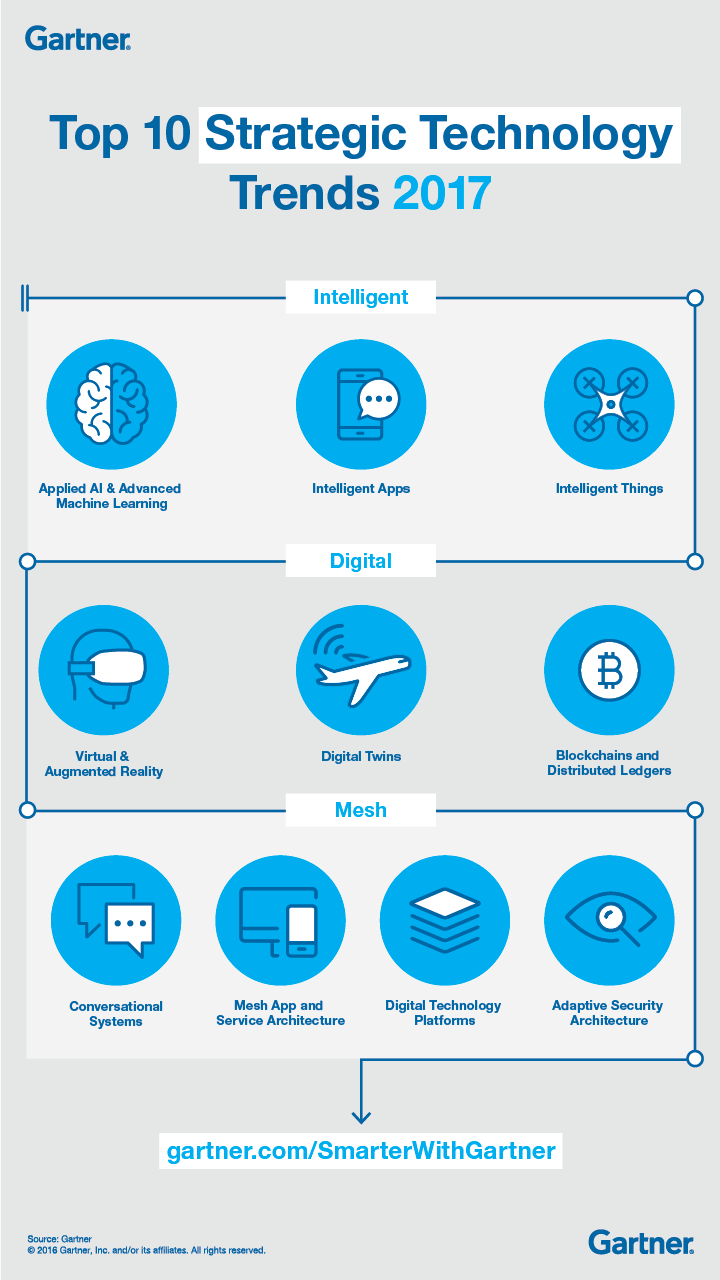
Adaptive Security Architecture
“The evolution of the intelligent digital mesh and digital technology platforms and application architectures means that security has to become fluid and adaptive. Security in the IoT environment is particularly challenging. Security teams need to work with application, solution and enterprise architects to consider security early in the design of applications or IoT solutions. Multilayered security and use of user and entity behavior analytics will become a requirement for virtually every enterprise,” points out Gartner.
Top 20 business people to watch for in 2017
Each one of us needs to be inspired, to meet and read about inspirational people and success stories that truly show us that the sky is the limit. We compiled of list of great entrepreneurs, social media influencers, both men and women, that we believe deserve a look over their careers so far and that will still be a great inspiration in the years to come.
Neil Patel – an internet marketer and conversion expert, best known as the founder of Crazy Egg, Quick Sprout, and KISSMetrics. Recognized as a top 100 entrepreneur under the age of 30 by President Obama, Patel is also a regular, respected contributor for publications such as Inc., Fast Company, Forbes, Entrepreneur.com and TechCrunch. He helps companies like Amazon, NBC, GM, HP and Viacom grow their revenue.
John Rampton is a serial entrepreneur, connector, and the founder of Due.com. Rampton has hailed as No. 3 of the Top 50 Global Online Influencers and one of the Top 10 Most Influential PPC Experts in the World for 3 years running. Time Magazine recognized John as a motivations speaker that helps people find a “Sense of Meaning” in their lives. He currently advises several companies in the bay area. John loves helping others succeed online. It’s all about helping and giving back. It brings me joy in my life.
Chris Stoikos is best known for his hilarious viral videos, which generated 130M views and $10.5M in sales in the past year alone as part of his venture Dollar Beard Club. Stoikos has also appeared on NBC’s Shark Tank and generated millions in revenue for various product launches. is a highly regarded serial entrepreneur with two successful exits under his belt. He is an expert at creating and organizing dynamic teams that can execute business ideas quickly and effectively, and set them up to be self-sustaining organizations.
Ann Handley has been named by “Forbes” as the “Most Influential Woman in Social Media” and one of the Top 20 Women Bloggers. She is the chief content officer of MarketingProfs, a training company that empowers marketers internationally with the skills they need to drive success at their companies, and her book “Everybody Writes” is a Wall Street Journal bestseller. She is also the co-author of the best-selling book on content marketing, “Content Rules: How to Create Killer Blogs, Podcasts, Videos, Ebooks, Webinars (and More) That Engage Customers and Ignite Your Business.”
Moreover, a pioneer in digital marketing, Ann is the co-founder of ClickZ.com, which was one of the first sources of digital marketing news and commentary.
Shradha Agarwal co-started Context Media with a goal to help patients with chronic diseases better manage their health. She is now reaching more that 6+ million patients a month. Shradha co-founded JumpStart Ventures in 2011 to fund other passionate entrepreneurs who are executing ambitious solutions in healthcare, education and media communications, and has since backed more than 40 companies with over $10 million in venture investments. She mentors entrepreneurs at Techstars, Impact Engine & Blueprint Health, but is equally invested in the venture philanthropy model for scaling nonprofit solutions through SVP Chicago and The Chicago Public Education Fund. She serves on the boards of OneGoal and Chicago Children’s Choir and spiritedly supports youth education, women leadership, and civic engagement. The CEC recently honored the two ContextMedia co-founders with the “2015 Chicagoness Award” for their deep commitment to developing the city’s ecosystem. Agarwal was honored as a Champion of Change by the White House, recognized as Best Female Founder at the United Nations, and won a Moxie Award as “Tech Woman of the Year” in Chicago.
Anthony Smith is Founder and CEO of Insightly, a San Francisco-based company that provides customer relationship management (CRM) cloud-based software to more than 1.2 million customers in 200 countries. After identifying a market need for a CRM solution for small businesses, Anthony built the first version of Insightly himself, using his previous experience of designing, constructing, and implementing CRM software for enterprises.
Julia Taylor Cheek isn’t new to business, but the Harvard Business grad’s new company is literally changing the way we live. Cheek’s company, EverlyWell (of which she is both co-founder and CEO) is simplifying health testing and putting it into words and charts that everybody can understand.
Branden Hampton is the king of social media, having built over 33M followers across Instagram, Twitter and Facebook. He’s also the CEO of the social media marketing company One Penny Ad Agency and co-author of “ How to Set Up Your Business for Under $1000”.
Brian D. Evans is an Inc 500 entrepreneur and the founder and CEO of Influencive, an online publication read by millions of young entrepreneurs. His company, BDE Ventures had 2,388% growth in 3 years and was the 25th fastest growing advertising and marketing agency in America.
Ekta Sahasi is the vice president of the U.S .Business Innovation Center (BIC) for Konica Minolta, where her team seeks out new places to invest in disruptive technology that can advance the company’s competitive advantage. When not investing in startups and overseeing innovation at Konica Minolta, Sahasi helps startups understand how they can enter Asian markets and work within those cultural parameters. Prior to joining Konica Minolta, Ekta spent 10 years at eBay Inc. where she co-founded and led both eBay and PayPal’s Research and Innovation Labs. She successfully developed one of the largest corporate innovation programs, and experimented with emerging technologies for enhancing existing technology stack and M&A. As Director of Innovation Products and Research at PayPal she built and scaled a global cross-functional team and led the strategic vision and execution of high-impact projects.
Russ Ruffino: Founder and CEO of Clients on Demand, the most reliable client attraction system in the world, Ruffino has helped coaches and thought leaders all over the world build six-figure monthly businesses from scratch. His massive success in marketing and as a business owner has allowed him to become one of the most respected business coaches in the industry.
Pejman Ghadimi is a self-made multi-millionaire, serial entrepreneur, best-selling book author and currently the CEO and Founder of Secret Entourage. The platform was started in 2009 to help bring together some of today’s greatest and brightest CEO’s, business owners and innovators in an attempt to help bridge the gap between formal and self-education by providing current, relevant, as well as affordable coaching and mentorship. Secret Entourage presently is home to over 280 accredited entrepreneurs covering more than 100 industries, over 30,000 students and reaches millions through social media. Since its launch, Secret Entourage has expanded its reach to over 1,200,000 new individuals each month and has grown as an accepted brand in the business and lifestyle community. The organization has to date aided tens of thousands of individuals and organizations in reaching their full potential. Secret Entourage has also helped unify accredited Entrepreneurs with the mission of bringing back the true meaning of entrepreneurship, and to be an inspiration to all. In 2012, Pejman authored Third Circle Theory, Gen Y’s blueprint to Entrepreneurship which had sold over 50,000 copies by mid 2013.
Pejman is also the owner and founder of VIPMotoring.net, a unique luxury lifestyle concierge service which currently was said to be “one of the best sources of education for today’s modern millionaires” by Forbes in 2012.
Roger Bryan is a serial entrepreneur with two successful exits: a marketing agency and an ecommerce business. His current venture, Enfusen, named a Top 10 Tool Entrepreneurs Can Use to Automate Their Business by Inc., is a machine-learning analytics platform that helps digital marketing agencies drive increased traffic and conversion for their clients.
Sam Ovens: Ovens has told the story how he started completely broke, working out of his parents’ garage in New Zealand, and in five short years, started a consulting business, moved to New York and made over $20 million. Ovens helps everyday people quit their jobs and “job-like” businesses to start their own highly leveraged consulting business. His methods are shaking up the consulting industry. Since 2011 he has created 14 millionaires and 340 six-figure earners with his training programs.
John Sculley and David Steinberg, ZetaGlobal – Former Apple and Pepsi CEO John Sculley and David Steinberg have become darlings of the marketing tech world, creating a business that provides analytics-driven platform that can also both see the customer’s life-cycle, measure ROI and understand your audience for intelligent marketing across the board. The company remains profitable, and made over $300 million in revenue the last year. Considering the cutthroat nature of the business, marketing tech leaders should pay real attention to Sculley and Steinberg as Zeta continues to grow.
Raviv Turner, CaliberMind, is a serial tech entrepreneur and former Israeli intelligence of CaliberMind, stands out. The company plugs into your CRM and content pipeline and uses psychographic ( a huge secret weapon in marketing) profiling of your sales and marketing calls, emails and customers’ social feeds to intelligently inform you both how to communicate with them and what content to feed them, such as security content for a security-minded person.
Amanda Signorelli, CEO of Techweek, is building tech-based entrepreneurial communities in major cities across North America, helping local business break through.
Danielle Morrill, CEO and co-founder of Mattermark, is improving the way that businesses find and connect with the ideal customers, simplifying the process of finding leads for businesses of all sizes. Small businesses will want to keep Morrill’s company on their radar in 2017.
Natalya Brikner – Founder and CEO of Accion Systems Inc., brings her MIT rocket science knowledge and experience to help push space-travel forward – all before the age of 30.

